Coreopsis Dyed Pleated Skirt
Dyeing a self drafted pleated skirt with coreopsis I grew in my back yard.
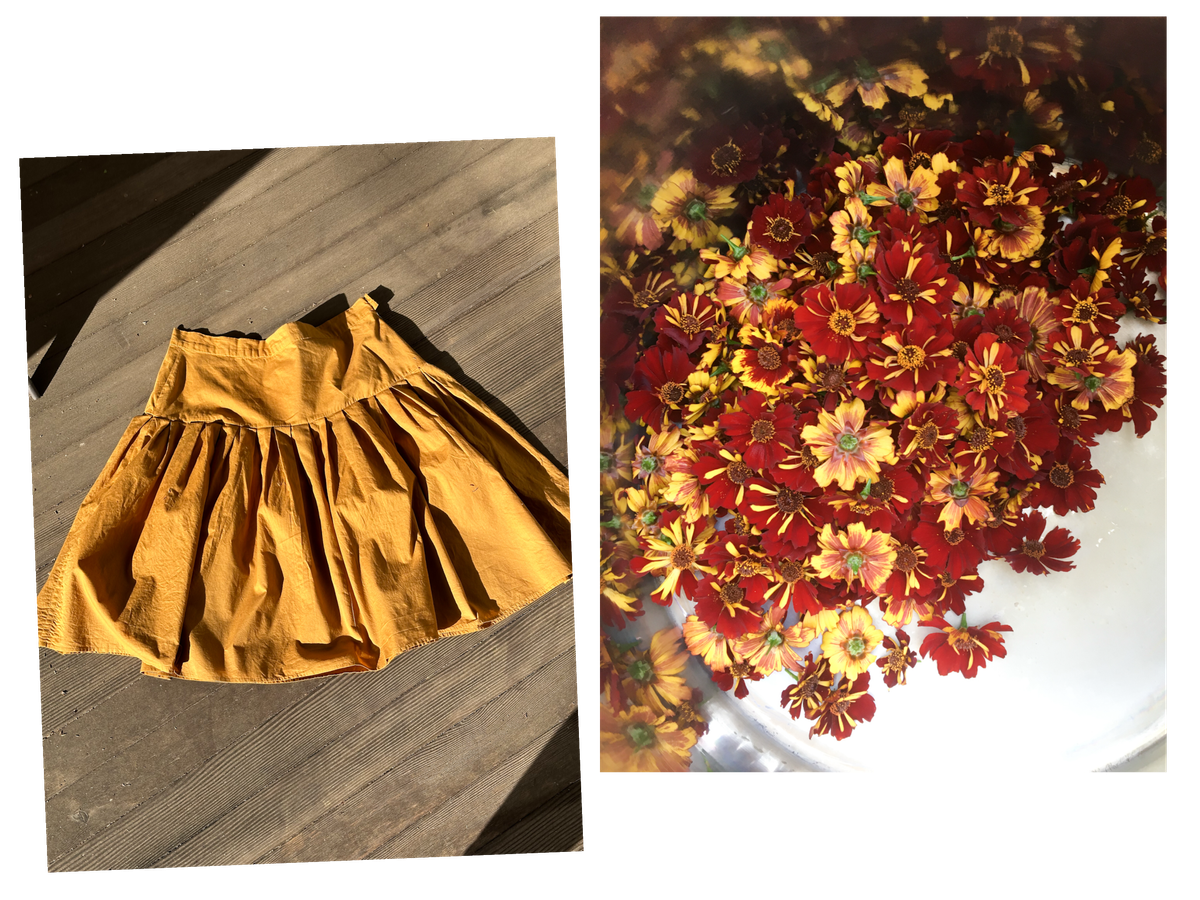
I wanted a floufy skirt with a yoke that would be easy to wear for the summer. Something lightweight and airy. I am inspired by the knee length pastoral skirts by Egg Trading and Bergfabel (these brands continually inspire me to make my own clothes—simple and comfortable in natural fibers).
Last year I mordanted 4 yards of white cotton batiste for dyeing using aluminum triformate (first time mordanting without heat). The fabric is so crisp and lightweight so I decided it would be the fabric that I’d work with. It’s nice to make use of something that had been neglected for a while. I knew I would need to dye it because the fabric in its light shade was transparent.
Pleating and Patternmaking
I have always loved pleats and they happen to be in right now (not that it matters but there are plenty of examples of pleated skirts to reference). I’ve already seen many knife pleat skirts so I wanted something different. There are more skirts that start pleats at the waistline. I wanted a yoke to make it a bit different and I also chose box pleats instead of the more popular knife pleats. I did a fair bit of ironing trying to pleat the fabric before sewing. It was a bit sticky under heat because of the mordant. I was happy to know that there was a sign of mordant on the fabric even if it was slightly sticky.
The pattern is simple. Using a custom skirt block, I cut a yoke horizontally at the max width of my hips and closed the darts to get a curved seam at the bottom of the yoke.
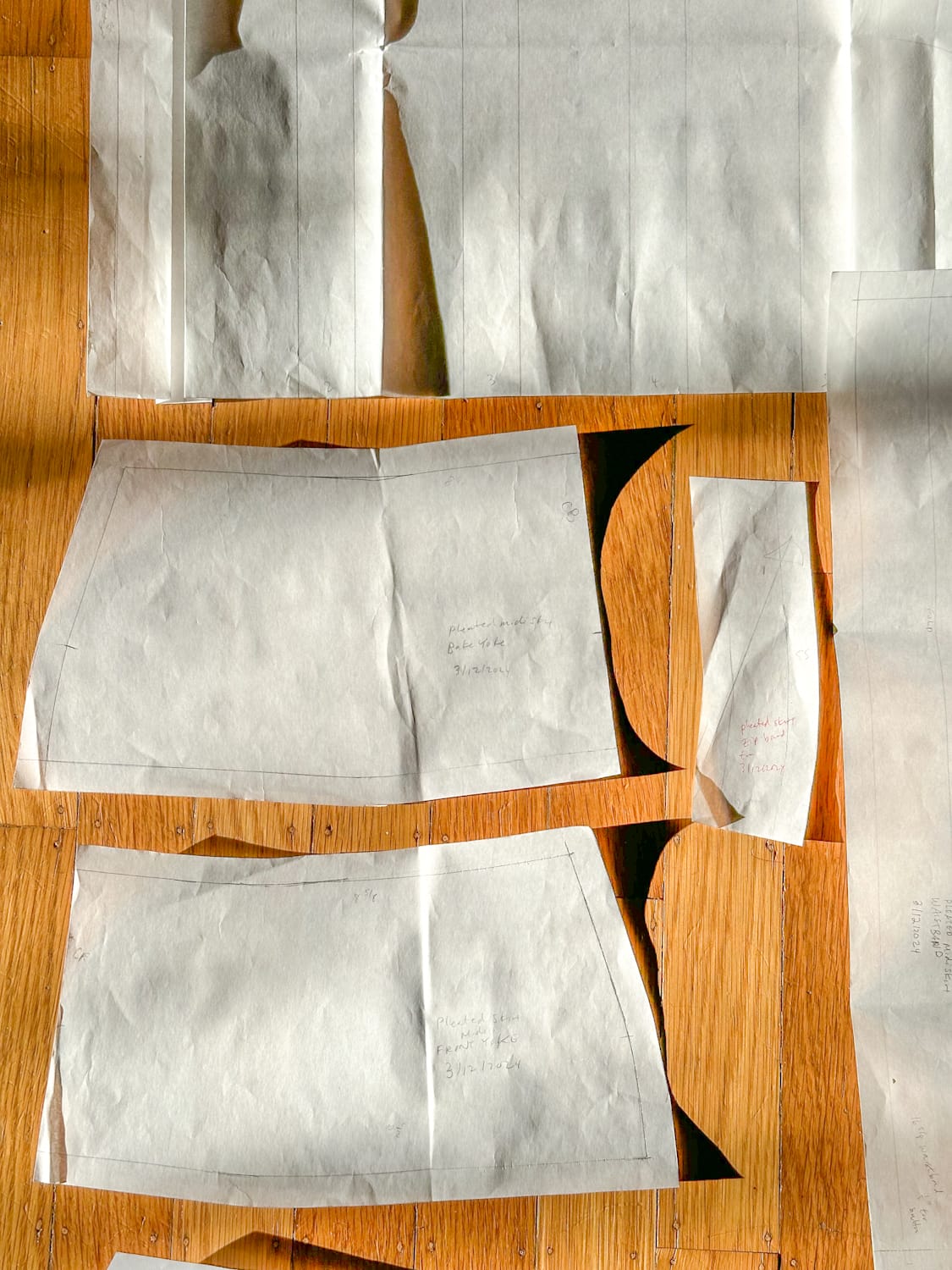
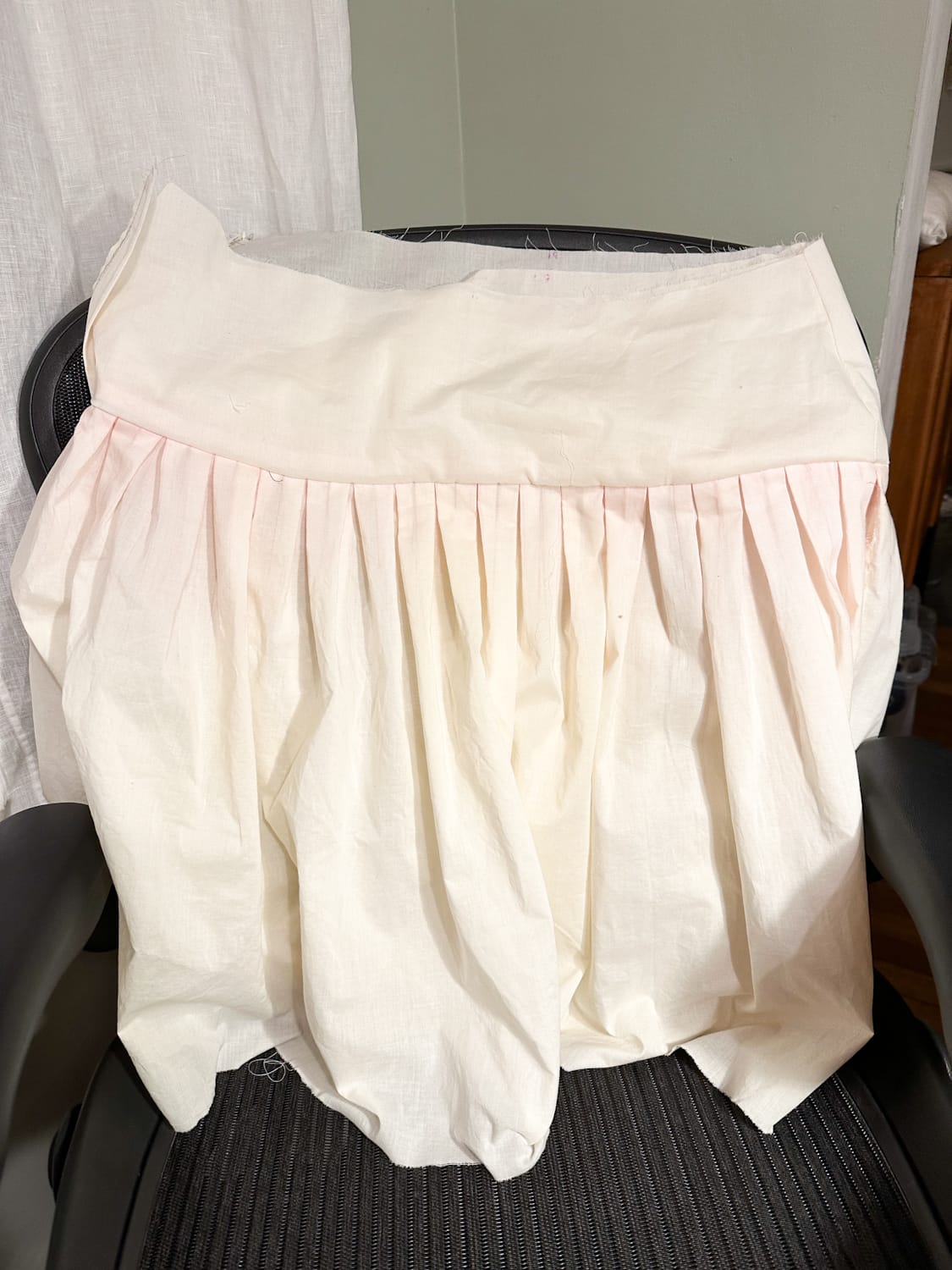
It took forever to pleat.
Pleating fabric is a different story. I have never pleated anything so my folds are imprecise. I first cut the fabric to the length I wanted so the skirt would fall just below my knee. The width of the fabric is 60”. I needed more than double that width for the circumference of the skirt so I had to piece together the cloth so the width would match the circumference.
After assembling a long width of fabric, I pre-pleated the fabric with 1/2” folds to the approximate circumference and a little more. Then I measured the length to the yoke and cut off the excess. I didn’t use a flat pattern for this part because even if I had drafted precise measurements, I couldn’t count on my folding to be exact enough. Luckily the number of pleats fit precisely into the circumference of the yolk.
A zipper opening was added to the right side. Traditionally skirt openings are on the left. I was thinking how much easier it would be to open because I am right handed.
Natural Dyeing
I had 110 grams of dried coreopsis that I grew from a balcony in 2019. I did not know how rich the color would be so I was extremely surprised that the skirt turned out a rich shade of ochre, dark gold. Collecting 110 grams of red coreopsis was not easy—it took forever to arrange on a food dryer and a long time to dry before it was ready to store. I am glad things turned out so well. And after letting the skirt sit in the dyepot for 2 days, warming up the pot every so often to around 160F, it came out evenly dyed and there wasn’t any ‘mordant stickiness’.
It’s always a surprise what shade I’ll get with natural dyeing. After letting the skirt sit in the dye pot for 2 days, warming up the pot every so often to around 160F, it came out evenly dyed and there wasn’t any ‘mordant stickiness’.
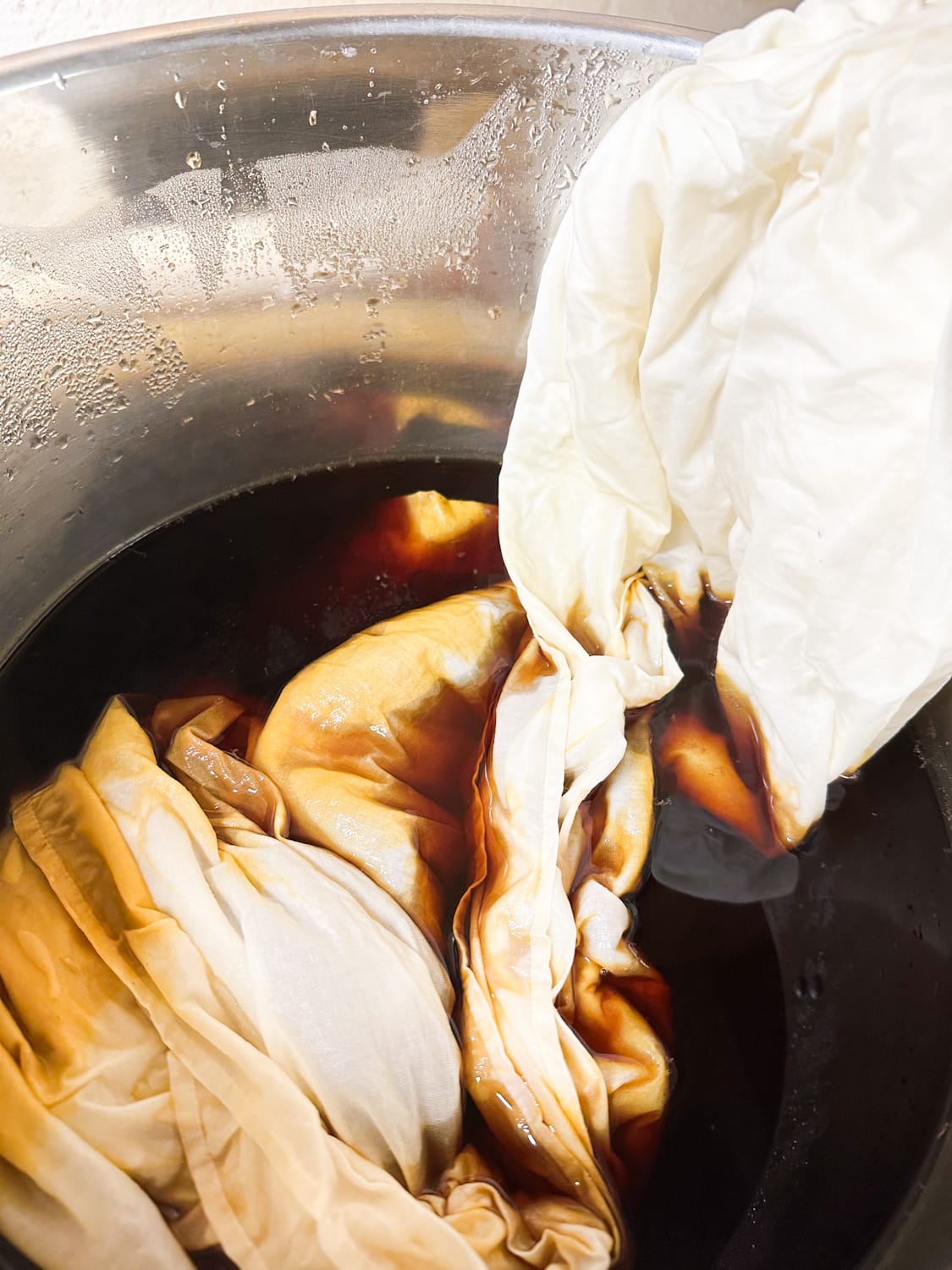
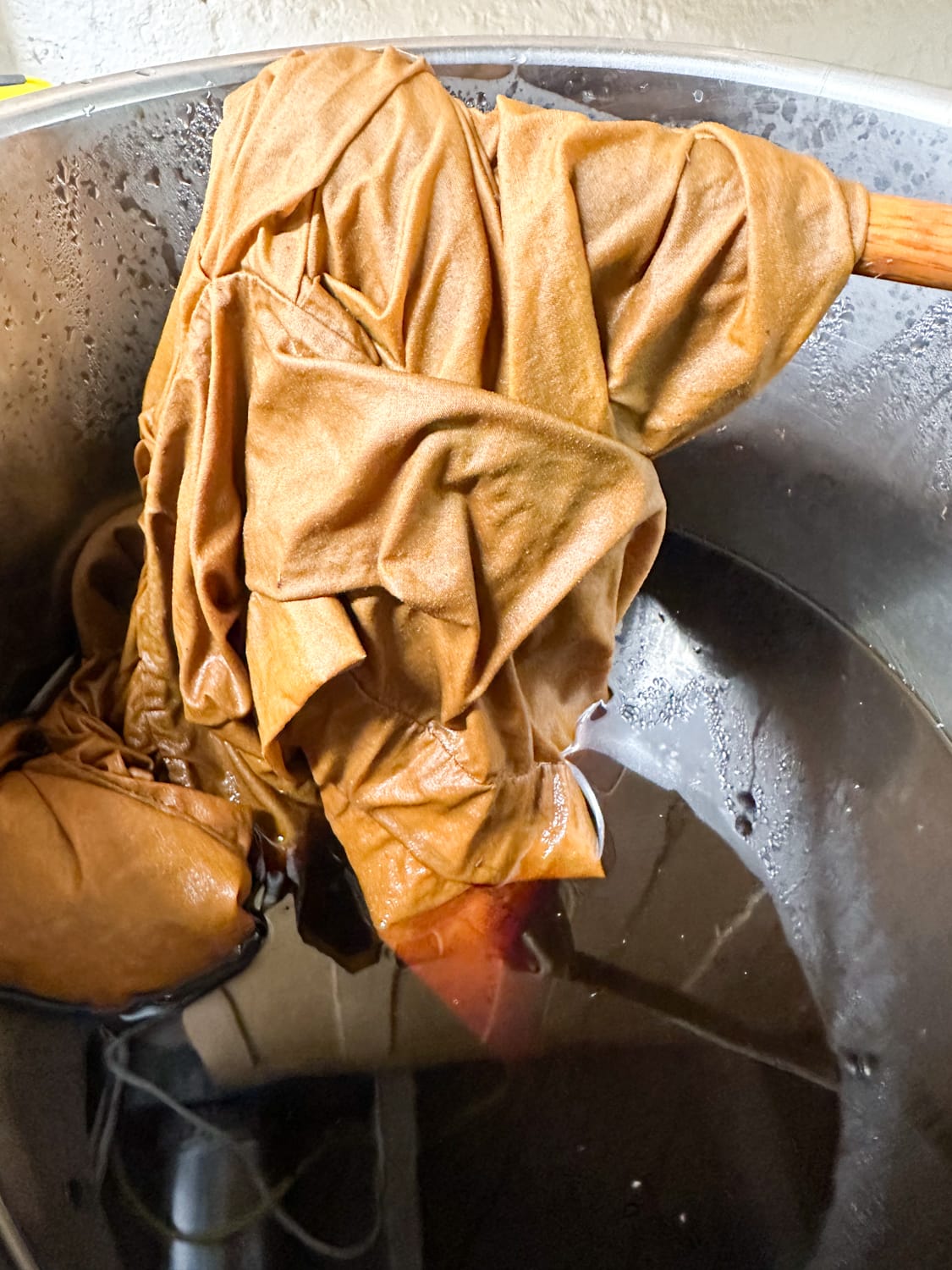
Beginning and hours after dyeing.
I did use fusible interfacing on the waistband and I was concerned that the fabric wouldn’t dye as nicely because I didn’t mordant the interfacing. I also didn’t mordant the threads that I used to sew the piece together so I wonder how color fast the seams would be after some time. Or perhaps the threads were able to catch some of the mordant washed off in the dye bath? I had rinsed multiple times after mordanting but I know there’s always a bit of mordant somewhere on the fabric.
Tutorials from natural dyers online often show how simple and easy it is to dye clothing. They never address issues like “should I dye the fabric first or make the entire garment first”. I usually make the garment first because then I can get the thread color to match. I also feel like I’m wasting dye if I dye an entire piece of fabric and I end up with a lot of scrap fabric that also absorbs the dye. Natural dyes are precious especially if you spend months watering and harvesting.
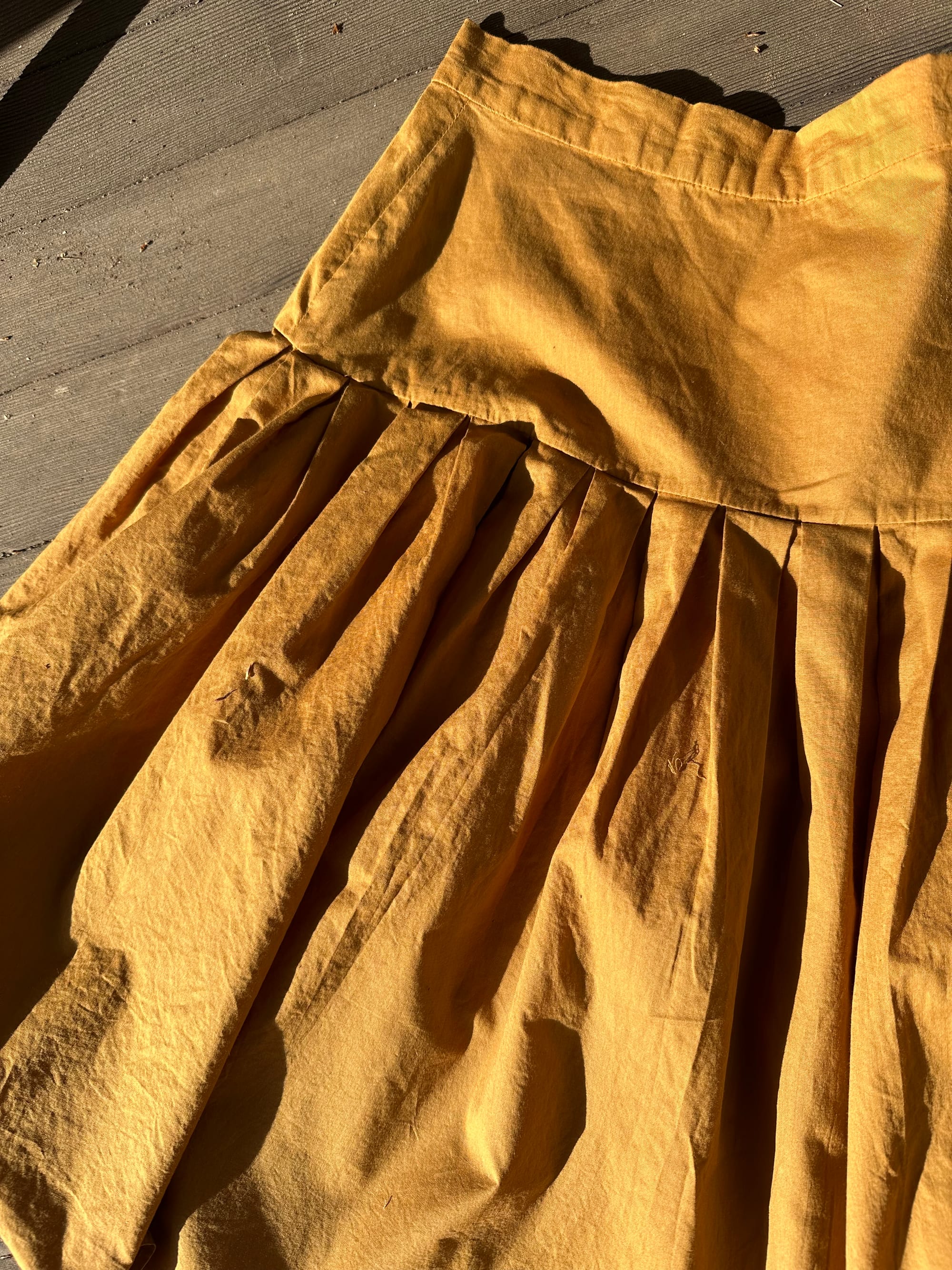
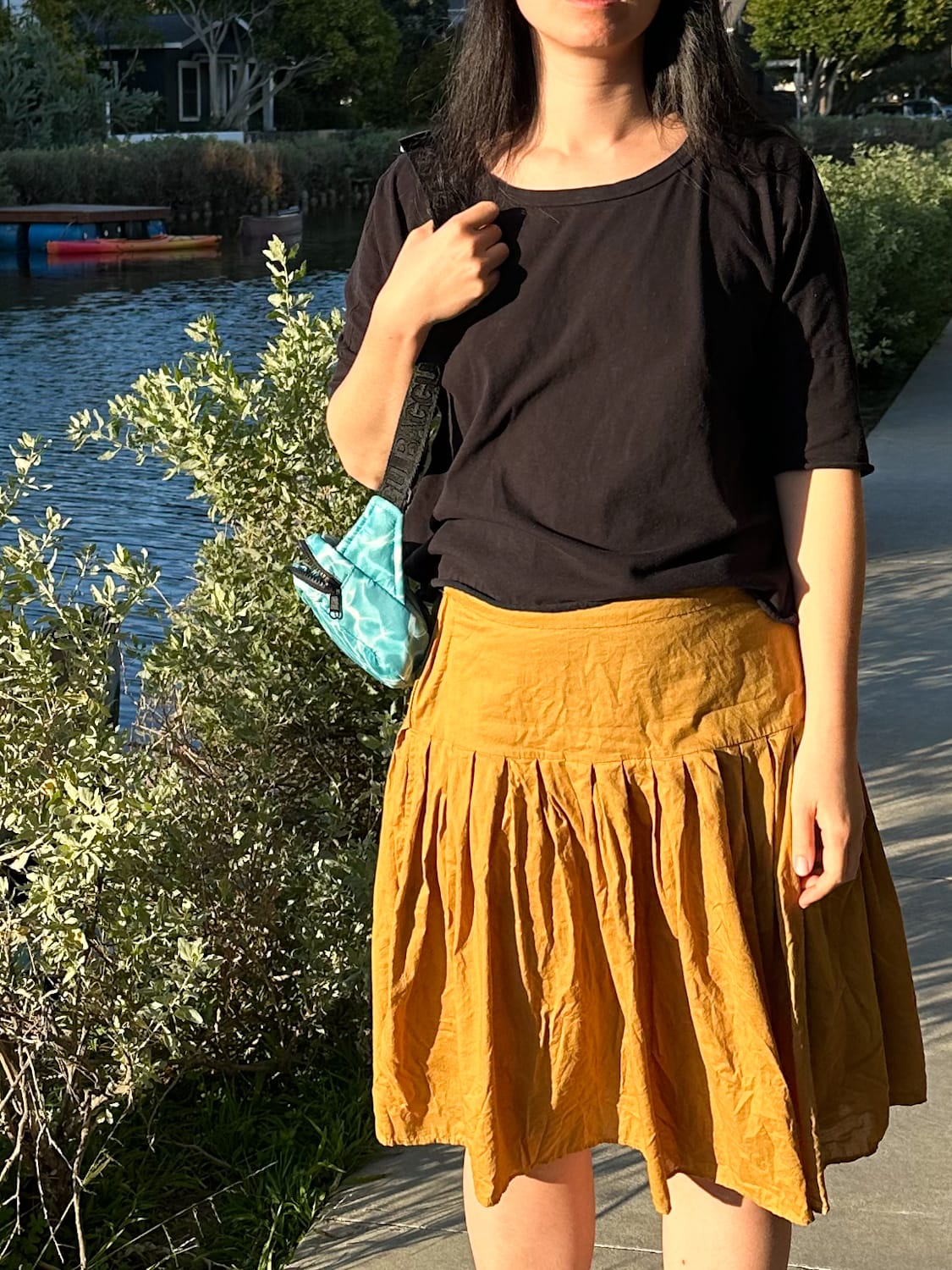
I was too excited to wear it and couldn’t wait to wash and iron after letting the dye sit on the fabric for days.
I have dyed sample fabric before with coreopsis so I knew ahead of time what the color was likely to be. I love dark ochre and rich gold. I loved the color so much that I decided to dip a linen shirt I had made and mordanted a year ago. However, it was a tiny bit lighter and more yellow—I might re-mordant and dye so that the color would be darker.
There is still a lot of dye left in my bath after dyeing 400 grams+ of fabric. I can tell because when in my other dye projects when there’s no more dye left, the water actually turns quite clear. My dye bath still has a ton of color left.
Coreopsis is so easy to grow. It is a low maintenance plant that flowers like crazy. It’s easy to collect seeds at the end of the season for the following year as well.
Materials
Aluminum Triformate from Botanical Colors, based in Seattle
Coreopsis ‘Roulette’ from Uprising Seeds, seeds grown across the Pacific Northwest
Batiste from Organic Cotton Plus 60” wide for ~$20/yard 2.5oz per square yard from India
Undyed Organic Linen Zelenava, ships from Massachusetts
